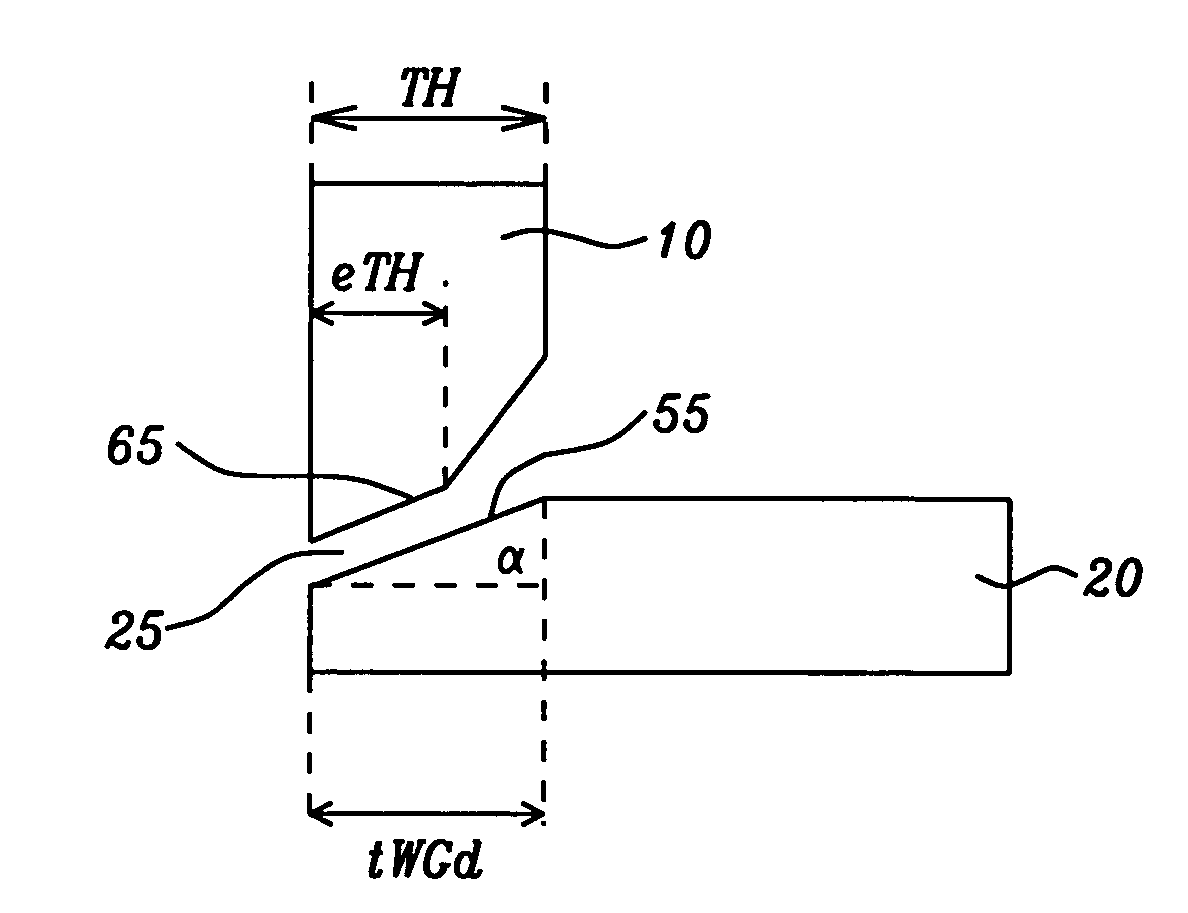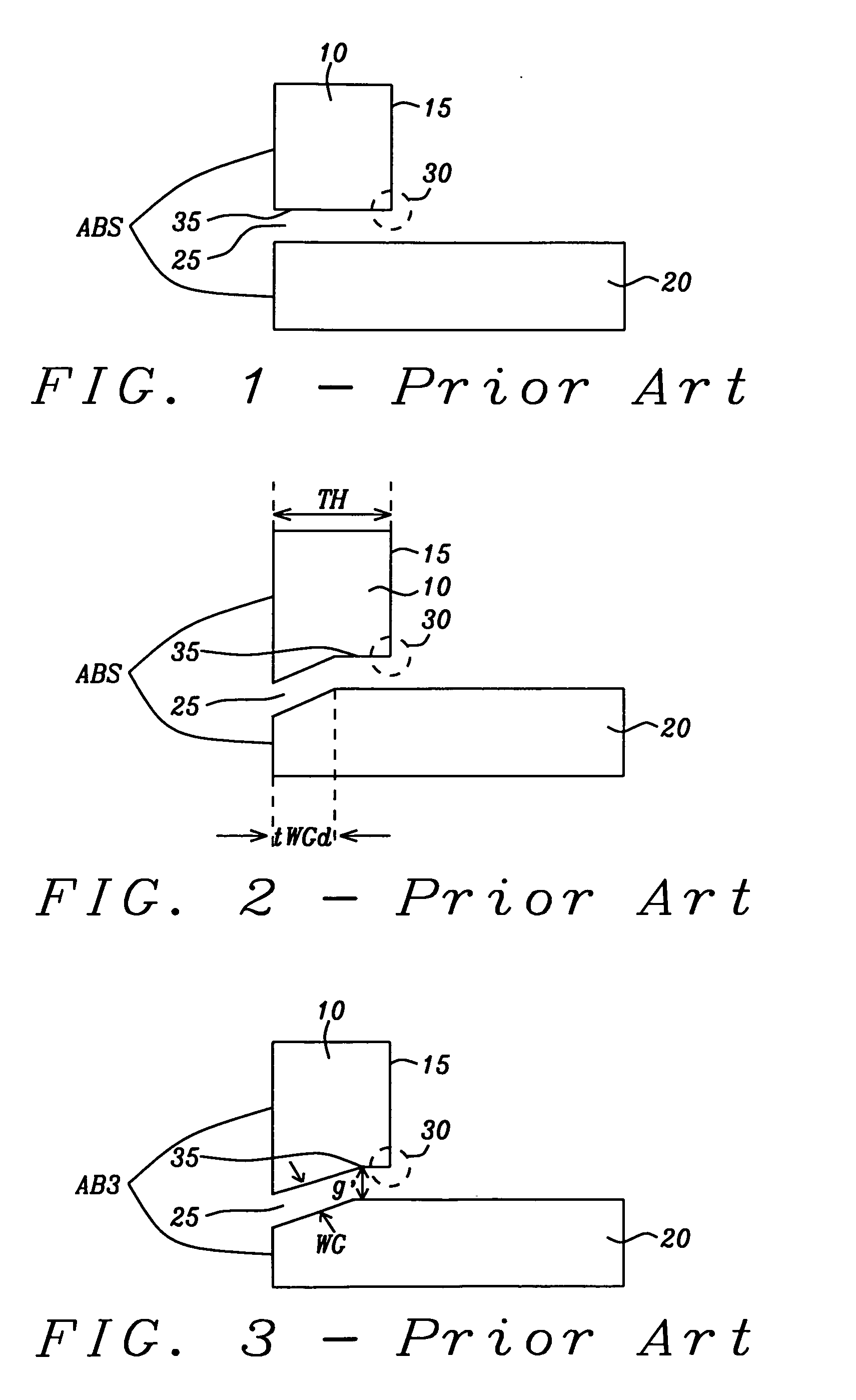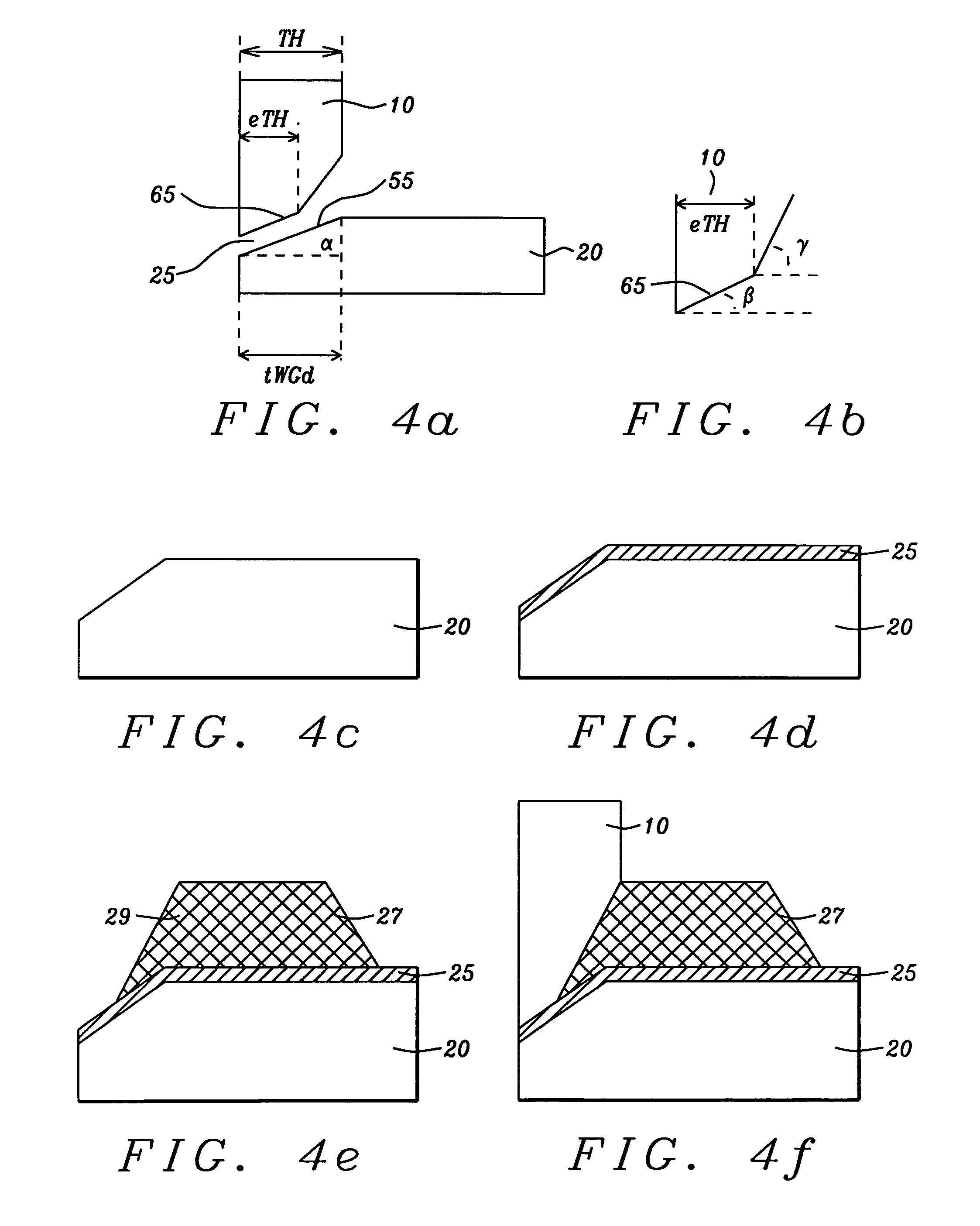Writer shields with modified shapes for reduced flux shunting
a technology write head, which is applied in the field of perpendicular magnetic recording (pmr) write head, can solve the problems of shields inevitably reducing the field produced by the main pole, disadvantageous shunting effect on the writing ability of the pole, and inability to disclose methods, so as to improve the on-track and off-track performance of the pmr write head, reduce flux shunting, and enhance the write field
- Summary
- Abstract
- Description
- Claims
- Application Information
AI Technical Summary
Benefits of technology
Problems solved by technology
Method used
Image
Examples
first embodiment
[0041]Referring first to FIG. 4a, there is shown schematically, in a cross-sectional view taken in a plane perpendicular to the ABS plane (5) of a main pole, a first preferred embodiment of the invention which is a PMR write head with a trailing shield (10) that is not of uniform thickness but has a maximum thickness, denoted TH (throat height). The main pole (20) has a maximum thickness, beyond a tapered portion (55), of between approximately 0.2 microns and 0.6 microns. The main pole is substantially of uniform thickness beyond this tapered portion. The tapered portion (55) is characterized by an angle with the horizontal (i.e., the horizontal being hereinafter defined as the direction perpendicular to the ABS plane), here denoted a. The upwardly tapered portion extends horizontally away from the ABS of the pole (5) for a horizontal distance denoted tWGd, which is between approximately 30 nm and 400 nm. The pole and shield are preferably formed of the magnetic materials FeNi, CoFe...
second embodiment
[0052]Referring first to FIG. 6a, there is shown schematically a second preferred embodiment of the invention in which a trailing shield (10) and a tapered main pole (20) are separated by a write gap (25) that is angled and not of uniform width. The backside edge (15) of the shield no longer forms a 90° angle with the leading edge of the shield (35) whose surface forms the write gap (25). Instead, a circled succession of two obtuse angles (32) creates a gradual corner without the sharp point of a 90° angle that became a source of flux leakage.
[0053]Referring to FIG. 6b, there is shown an enlarged view of the two obtuse angles (each being an angle α) encircled in (32) in FIG. 4a. The angles α and the height h which separates their vertices vertically (i.e. in a direction perpendicular to leading edge surface of the pole) are the parameters of the new shape. Their values range as follows: α in the range between approximately 120° and 170°, but preferably within the smaller range of be...
third embodiment
[0055]Referring to schematic FIG. 8, there is shown a configuration of a trailing shield (10) and a tapered main pole (20). In this embodiment, the (encircled) corner (33) formed between the backside surface (15) of the shield and the leading edge surface (35) bordering the rear of the write gap is formed as a rounded surface rather than a succession of obtuse angles as shown in FIG. 6a. The rounded corner, which would have a radius of curvature of between approximately 50 to 300 nm, achieves a similar result in that it eliminates sharp corners that are the source of flux leakage.
PUM
 Login to View More
Login to View More Abstract
Description
Claims
Application Information
 Login to View More
Login to View More - R&D
- Intellectual Property
- Life Sciences
- Materials
- Tech Scout
- Unparalleled Data Quality
- Higher Quality Content
- 60% Fewer Hallucinations
Browse by: Latest US Patents, China's latest patents, Technical Efficacy Thesaurus, Application Domain, Technology Topic, Popular Technical Reports.
© 2025 PatSnap. All rights reserved.Legal|Privacy policy|Modern Slavery Act Transparency Statement|Sitemap|About US| Contact US: help@patsnap.com



